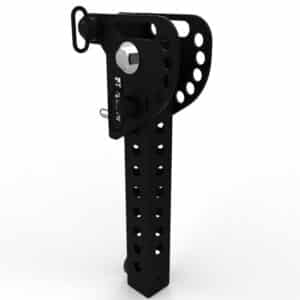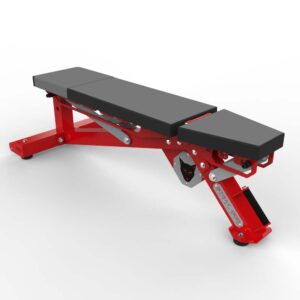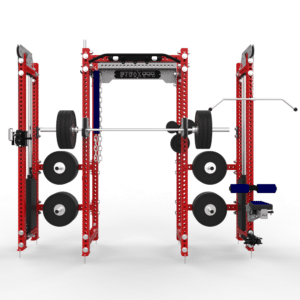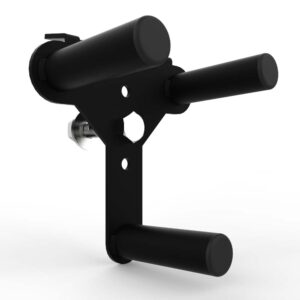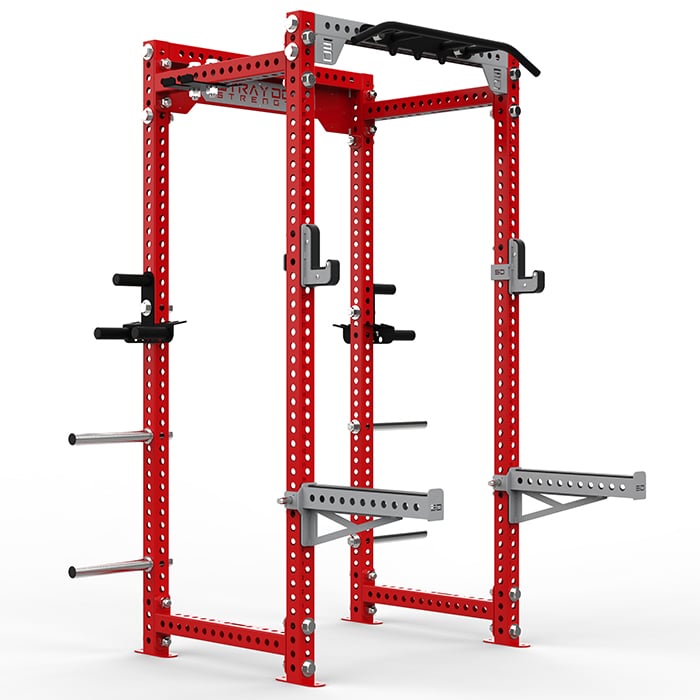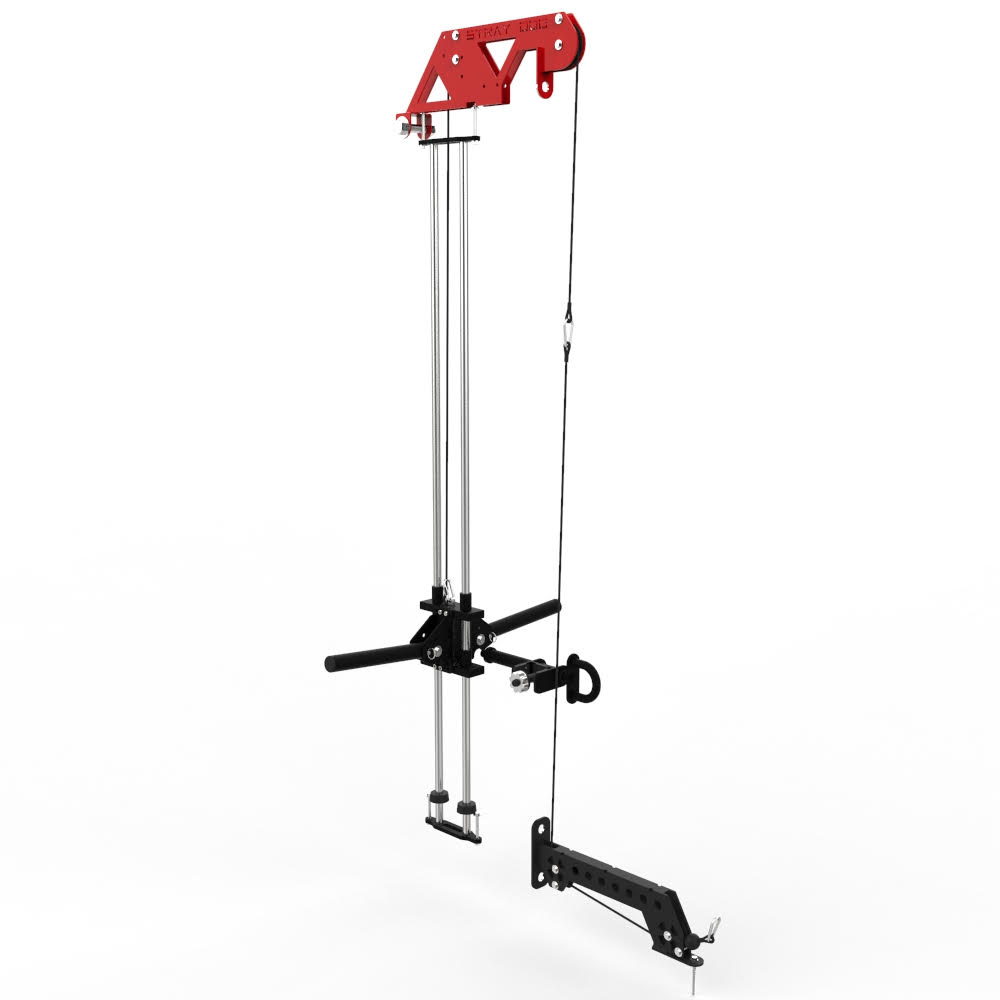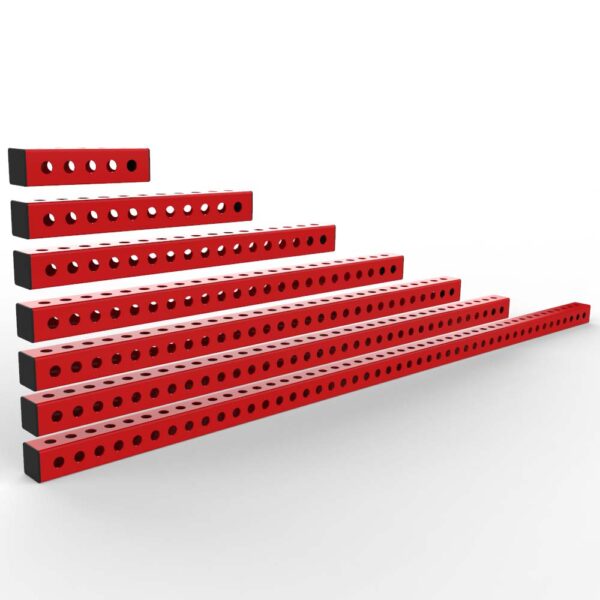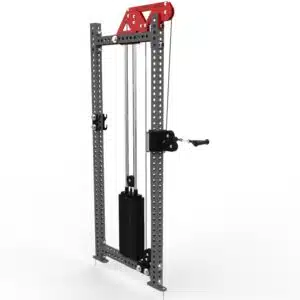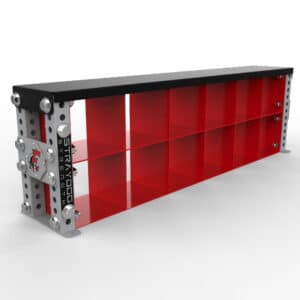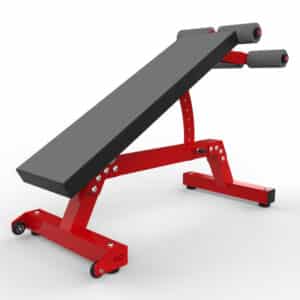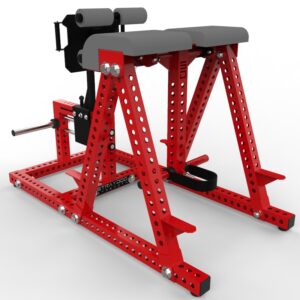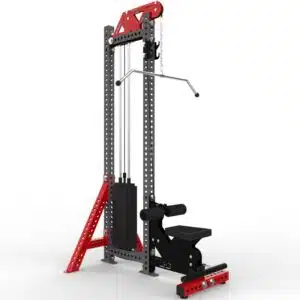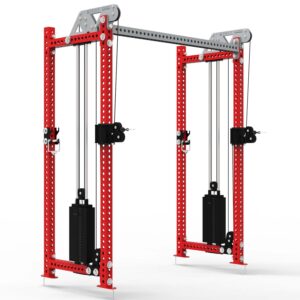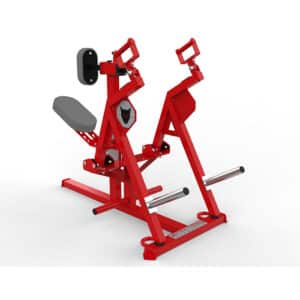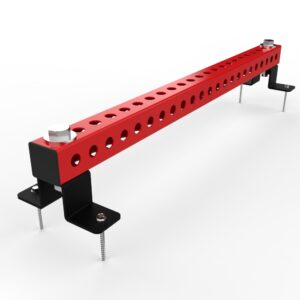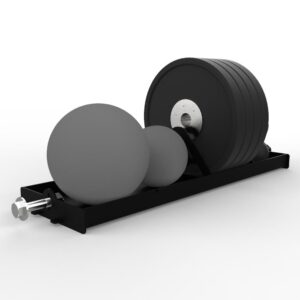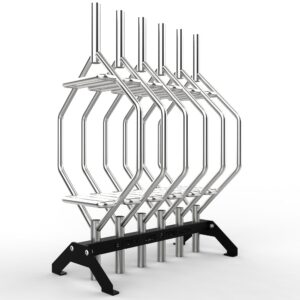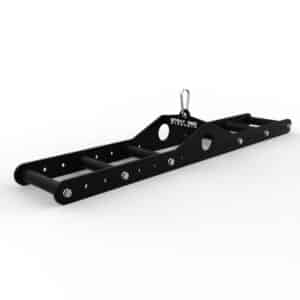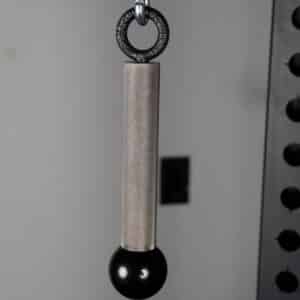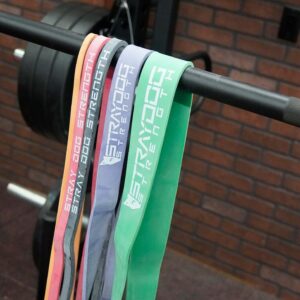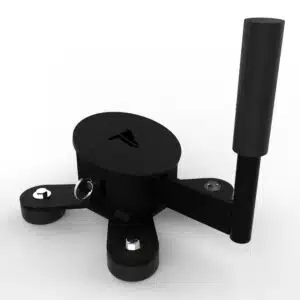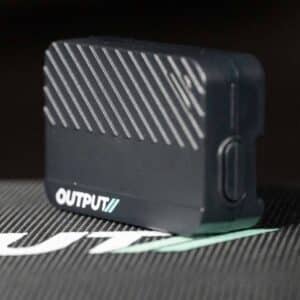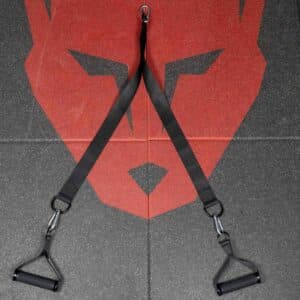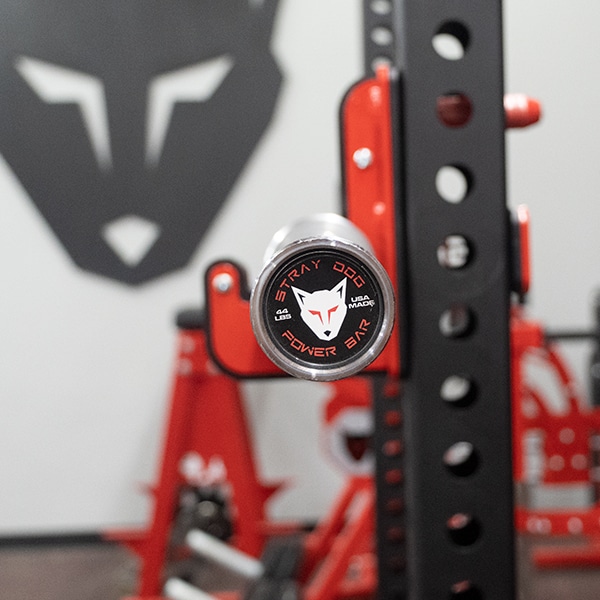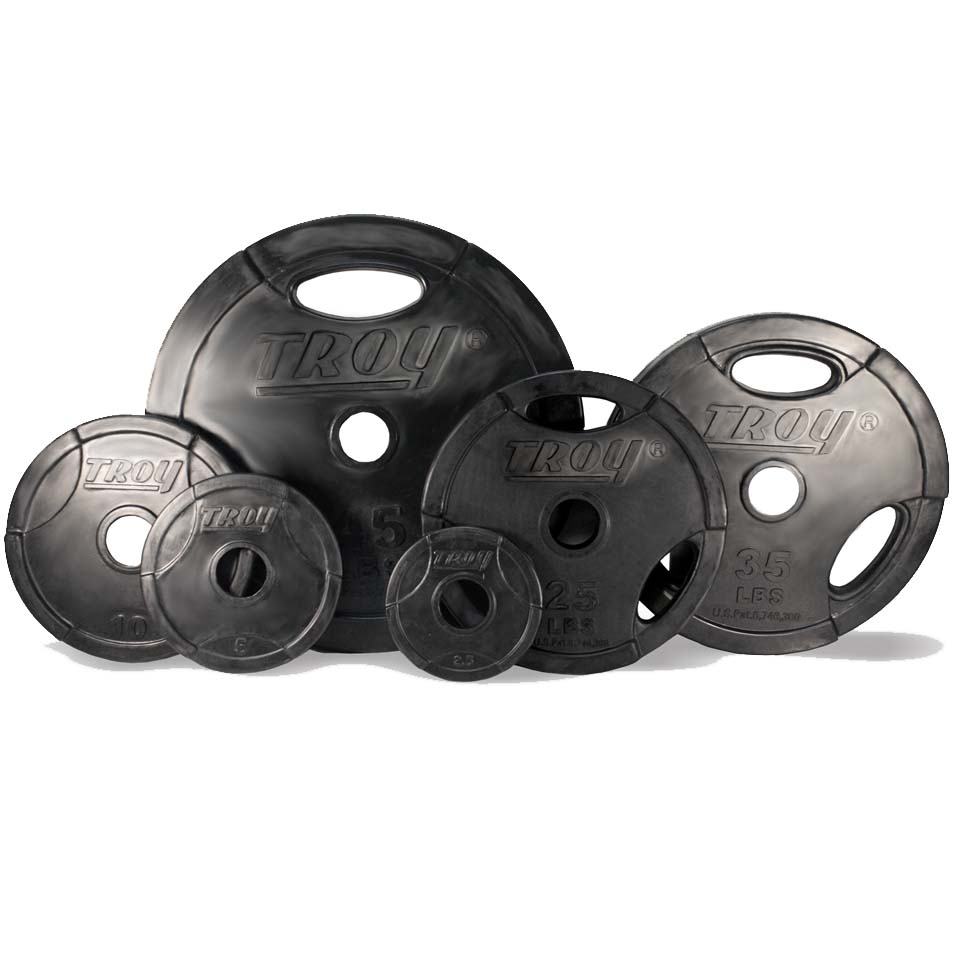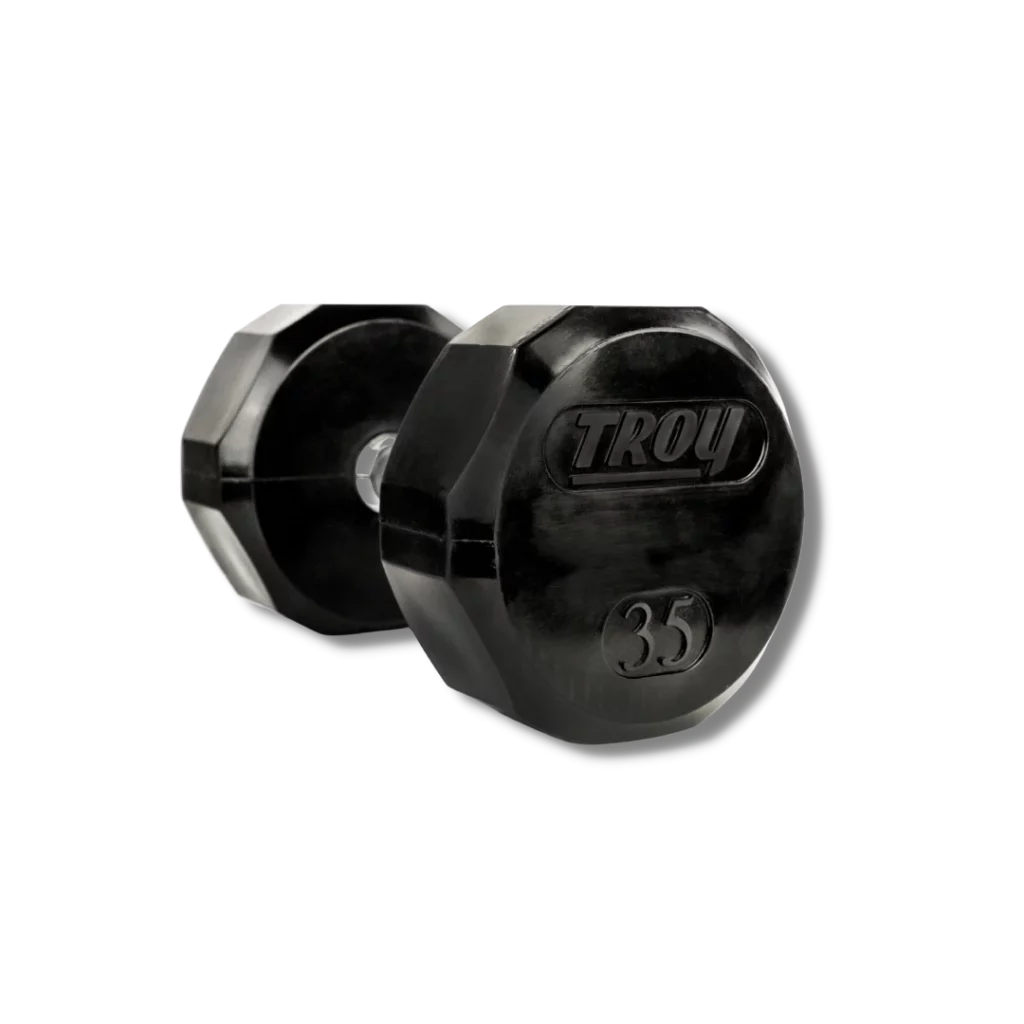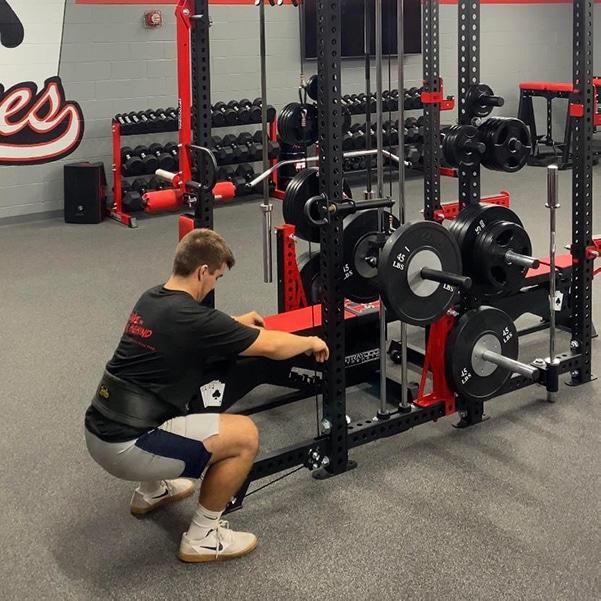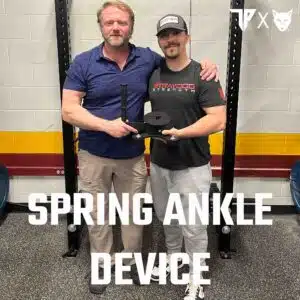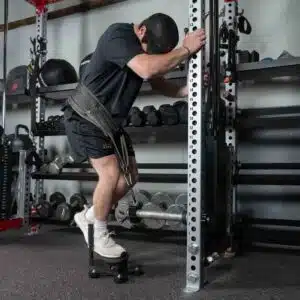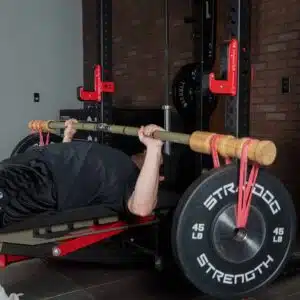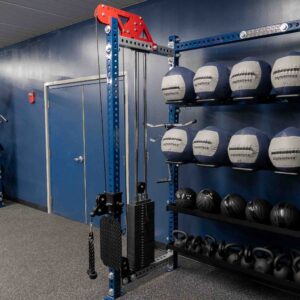Introduction
Cable training has some advantages over free weight training with dumbbells, barbells and kettlebells the first is set up time and a small learning curve. Cable machines take very little set up, very little time to adjust resistance and have little to no tear down as the sectorized stack doesn’t move. Cable training also has a smaller learning curve compared to most barbell movements such as a snatch or back squat that take many sessions to begin to get the form down and can be dangerous if not done correctly.
We realized that although there are many benefits to cable training it does not make sense to have cable machines that are single use take up a large portion of the valuable floor space in a sports performance facility. Which is why we have designed all of our cable machines to be constructed our of our rack uprights allowing you to use any of our cable machines as an attachment post when they are not in use. For example when our Lat pull downs are not being used a landmine could be added to the post to do landmine movements or a dip attachment could be added to do dips freeing up the rack allowing for more of the room to be programable.
Different types of cable machines
Stray Dog Strength has spent the last 20 plus years developing 3 different kinds of cable machines which are Cable Columns, Lat Pull downs and Belt Squats that are all available in the 4 forms below.
1. ATR Cable Machines designed to be connected together
2. Cable Machine Attachments designed to fit between the front and back rack posts
3. Rack Mounted Cable Machines designed to be mounted to the side or back of racks.
4. Stand alone Cable Machines designed to be a more traditional stand alone cable machines but still made out of rack uprights so you can add attachments.
Below from left to right in order is, ATR cable column, Cable Column Attachment, Rack Mounted Cable Column and Stand Alone Cable Column.
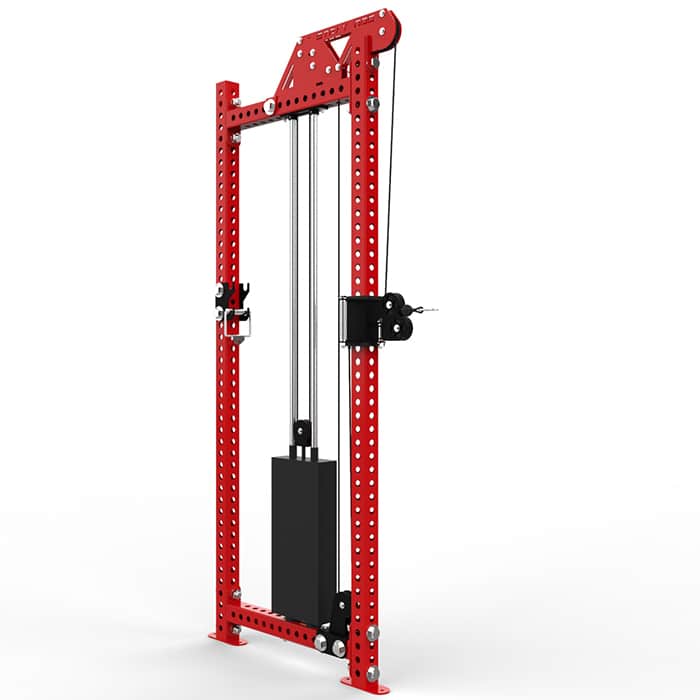

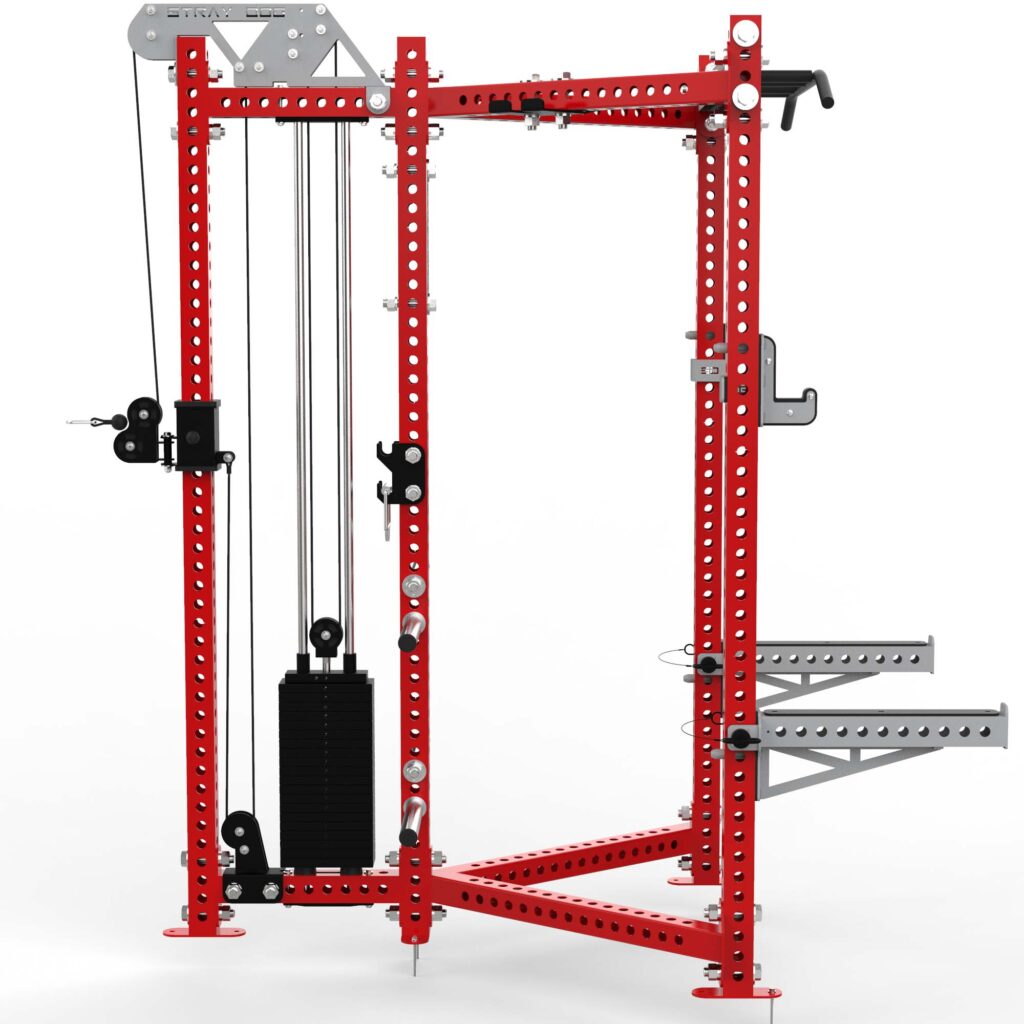

1. ATR cable machines
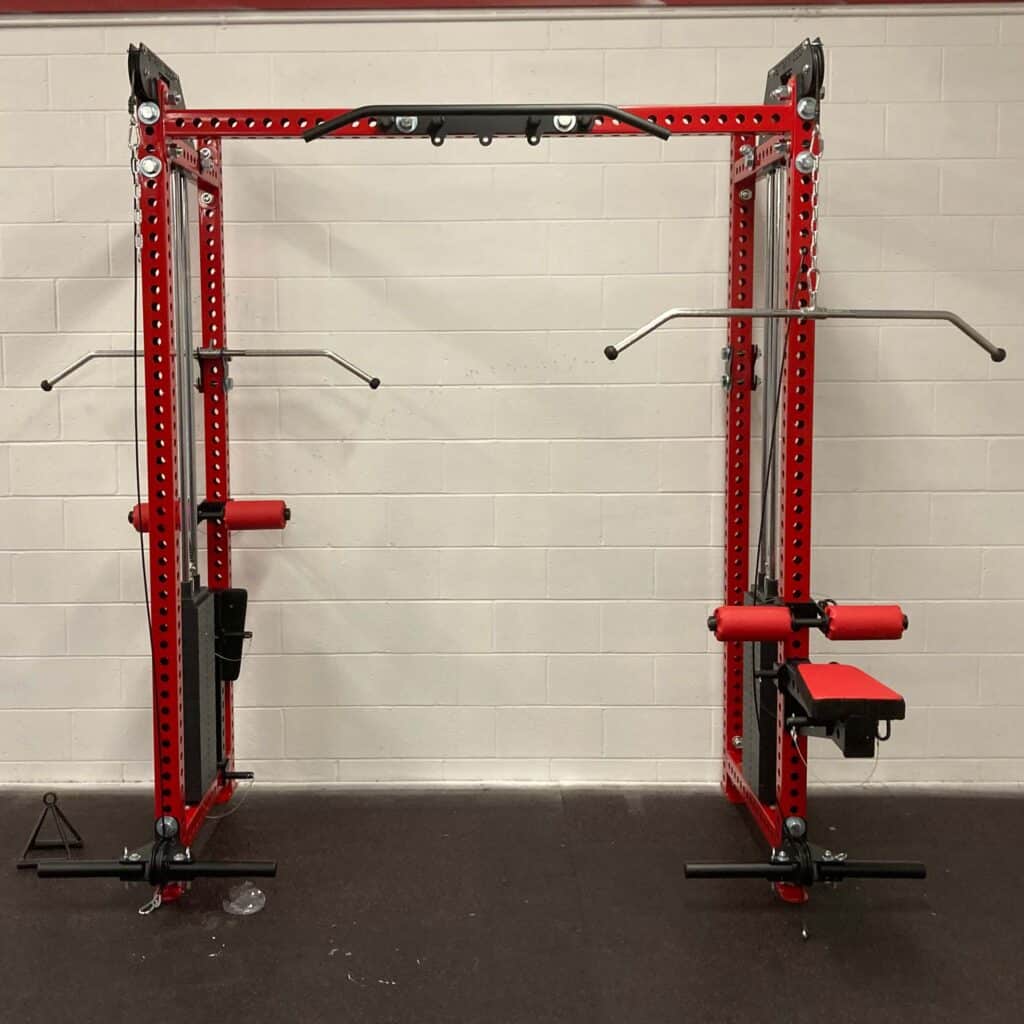
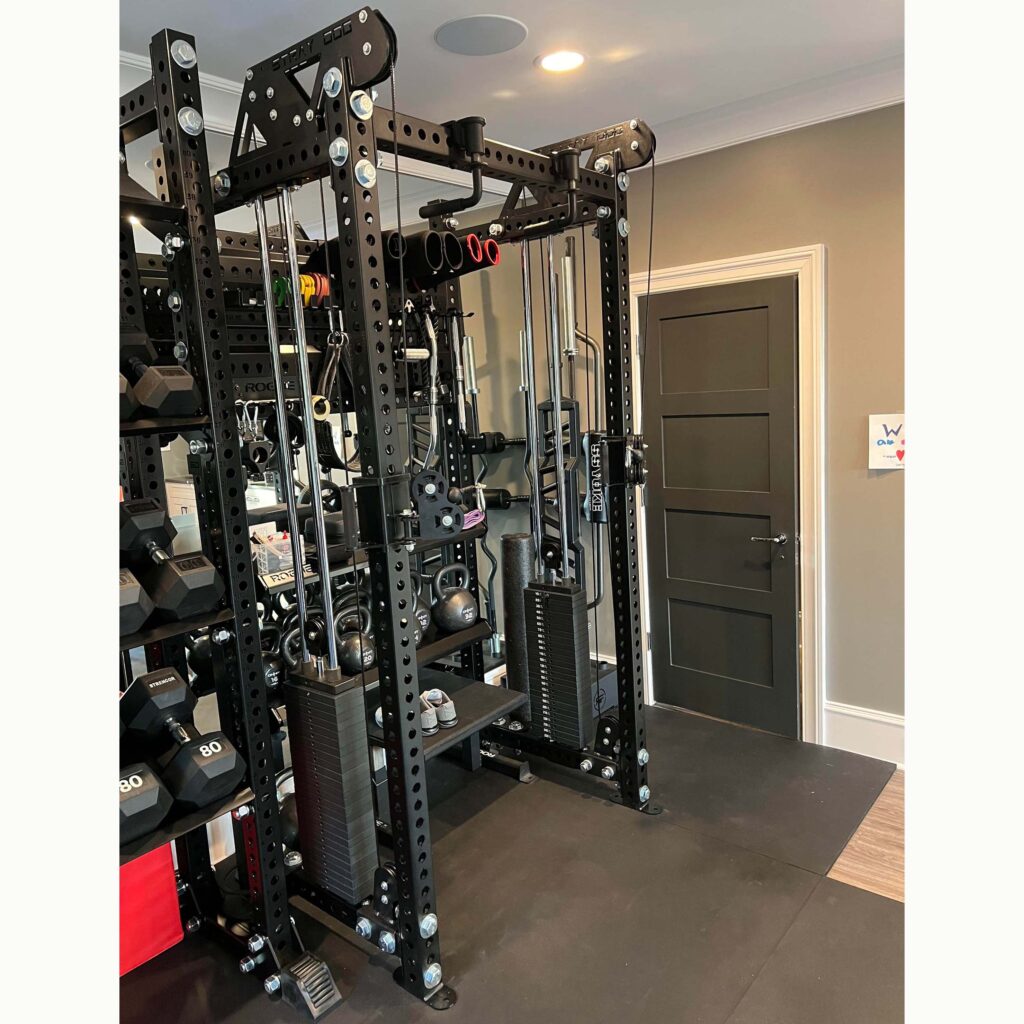
ATR Cable Machines are made using our ATR frame which is essentially one side of a half rack without plate pegs including 2 uprights and two crossmembers that we put the cable stack for the machine between. ATR Cable machines can be connected to each other or can be connected off the side of a rack using a crossmember or top beam connector All rack attachments and parts are compatible with ATR units.
Two ATR Cable machines can be connected with a 43″ crossmember to create a “Rack”, ATR units do not come with plate storage, bar cups or spotter arms like racks but they can be added as can any attachment.
In the pictures above you will see a red ATR unit that is comprised of two ATR Lat pulldown/low row units connected with a 72″ crossmember to make two independent Lat pull down Low row stations but they are too wide to lift off of which is why we added a Multi Grip Chin up to the 72″ crossmember.
The other unit above in all black is two ATR Cable Columns connected with a 43″ crossmember in the front and 43″ flat trays in the back. Connecting ATR units at 43″ allows you to lift off of them as they are spaced at the same width as our half and full racks at 49″ from outside of post to outside of post.
connecting atr's to a rack
Pictured below is our Pre-Configured ATR #1 which is an Alpha Half rack with an ATR cable column and an ATR Lat pull down low row connected to the rack with crossmembers and is a great example of how ATR units can be added to a rack.


institutional atr set ups
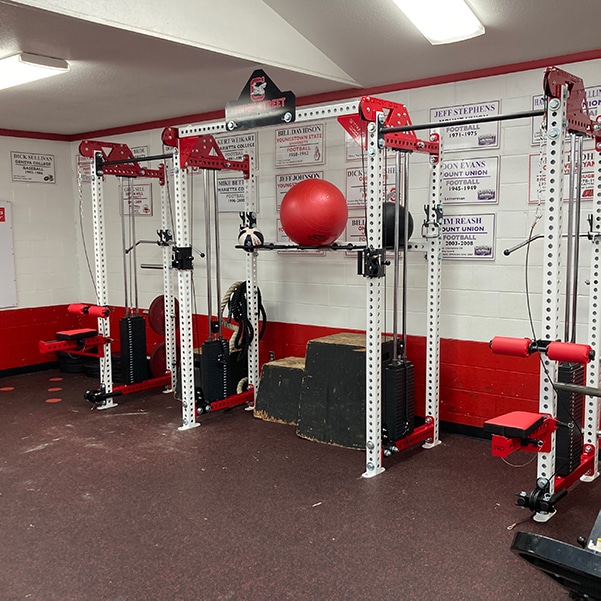
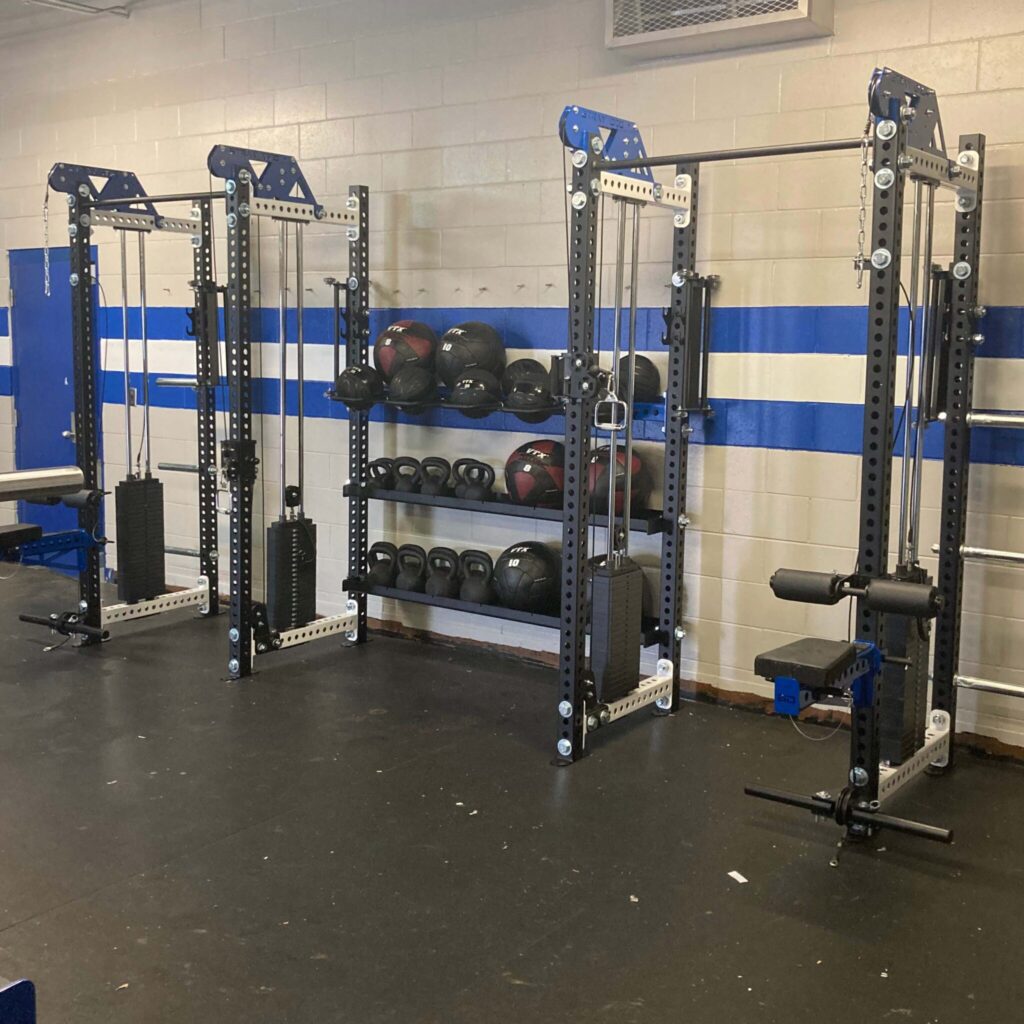
The two images above of ATR units the left one that is white and the right one that is black are common units that we sell to sports performance facilities.
They are comprised of 2 ATR Lat pull down low rows and two ATR Cable Column units with the cable columns being on the inside to create a functional trainer. The Cable columns and Lat pull downs are connected with our 43″ crossmember making them useable as extra lifting stations but the ATR cable columns are connected at 72″ to allow for functional trainer movements such as cable fly’s.
2. Rack Attachment Cable Machines
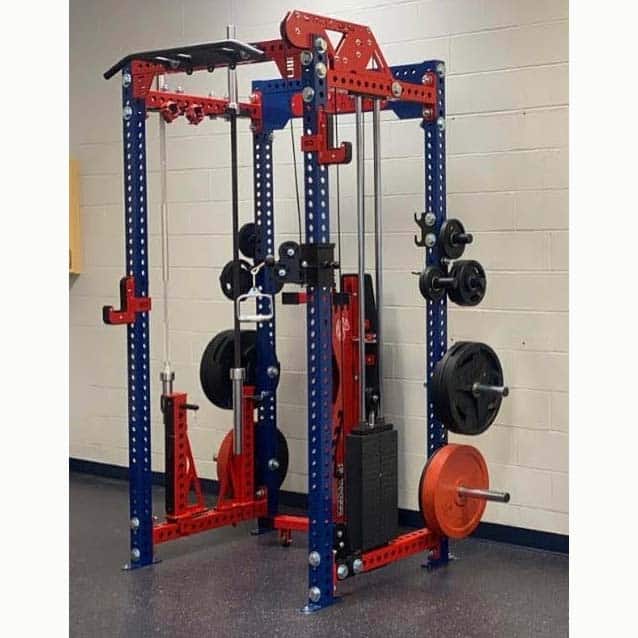

Rack attachment cable machines are unique to Stray Dog Strength, other companies can add a Lat pull down or cable column to a rack but they are attached like our rack mounted machines off the back of the rack adding to the footprint of the rack. Our Rack attachment cable machines which we offer in Lat pull down/low row, Belt squat/Lat pull down and Cable column versions go between the front and back rack posts using the rack as the frame and not adding to the footprint of the rack.
You will notice in the image above in black and yellow that the Alpha rack has two cable attachment machines both our Lat pull down low row and cable column without adding to the racks footprint making the rack much more functional in the same small footprint. The Blue and red unit pictured above has one cable column attachment but so does the rack next to it which creates a functional trainer (pictured in cover image).
It is possible to add two cable attachments to a rack, choose two of the same or mix and match the following, Cable Columns, Lat Pull downs or Belt Squat/Lat pull down to create the rack that is right for your training.
3. Rack mounted cable machines
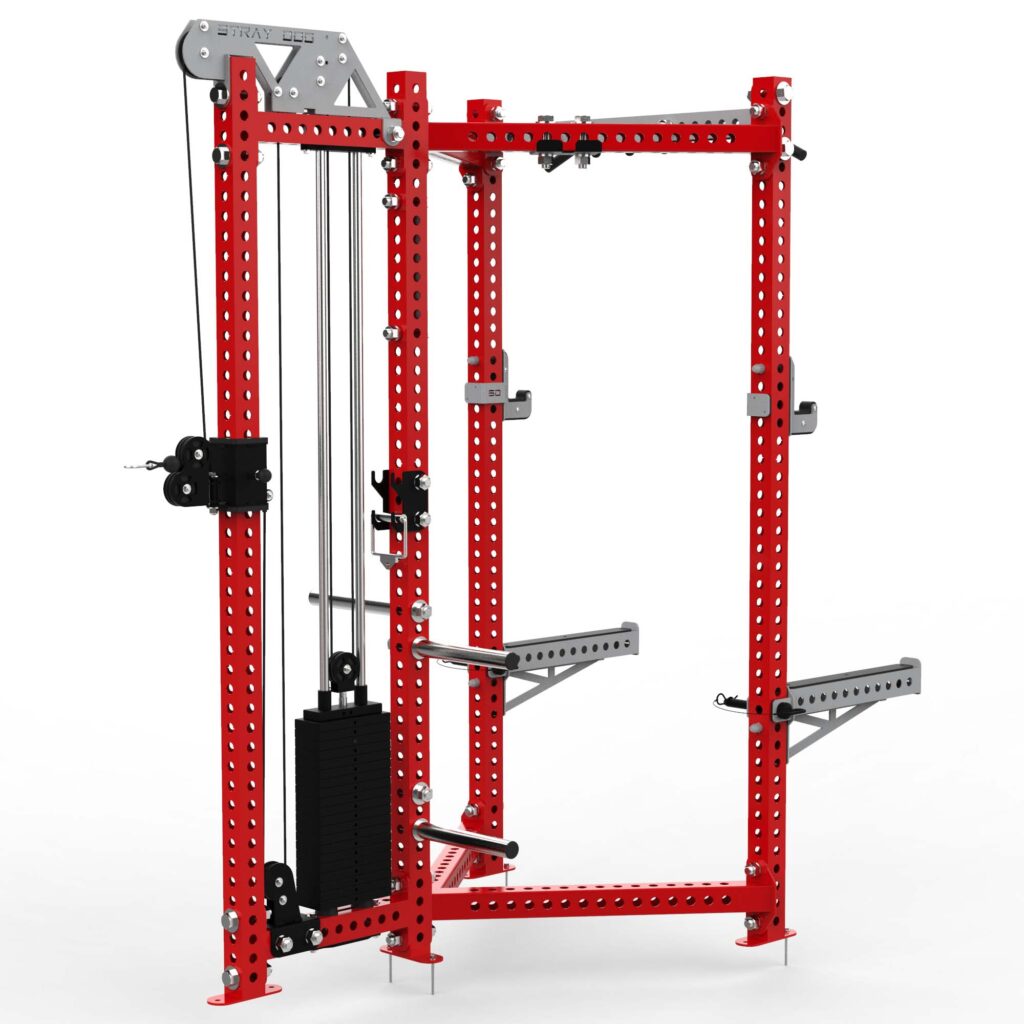
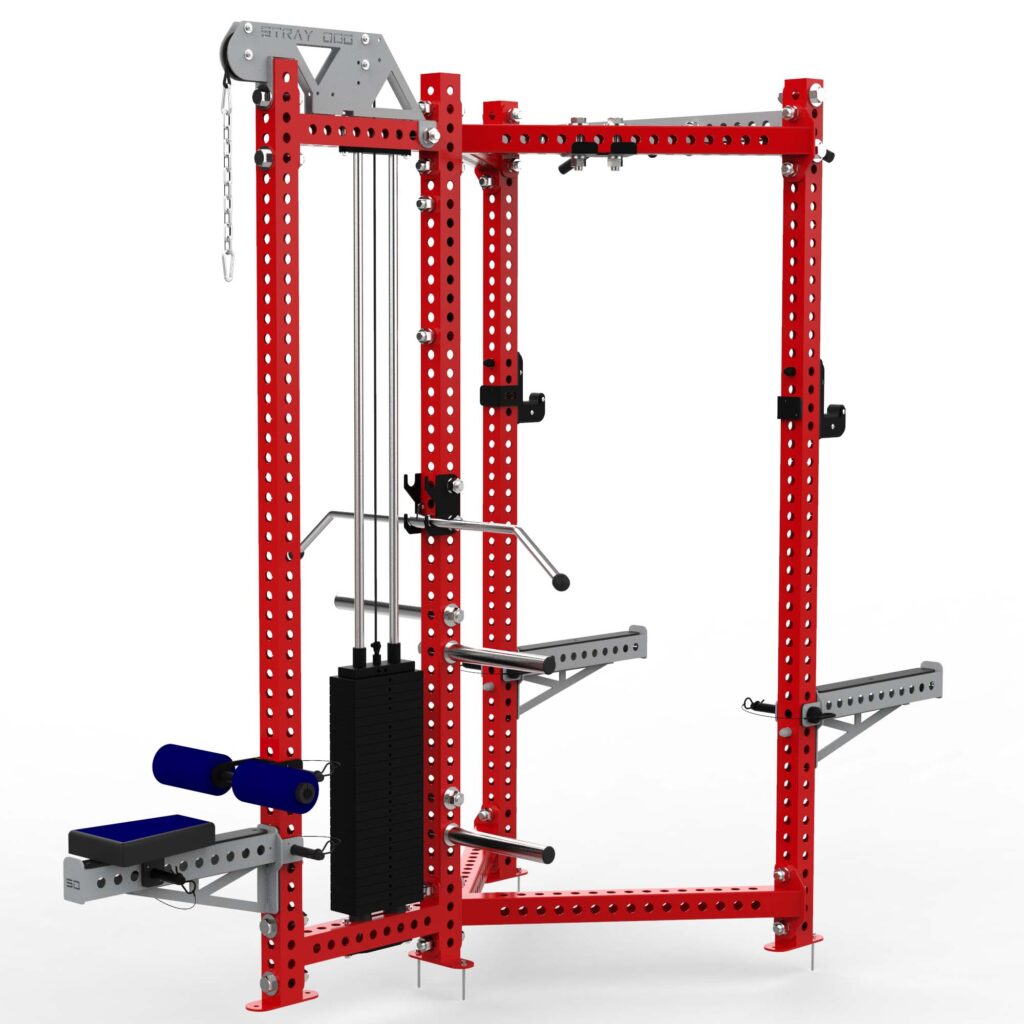
At the time this article was wrote we had not installed a Rack Mounted machine yet as they were just released in November which is why there is only renderings of the units but we have sold some and we will update the pictures in the near future.
Rack mounted units can also be mounted to a wall to create a wall mounted cable machine that would only come out 33″ from a wall (30″ crossmember and 3″ upright).
Rack mounted cable machines give customers the ability to add a cable machine such as a Lat pull down, Cable column or Belt Squat/Lat pull down off the back or off the side of their rack. Rack mounted cable machines are better for super sets and training multiple people at one time as they are used off the back or side of the rack keeping the rack posts for lifting free.
4. Stand alone cable machines

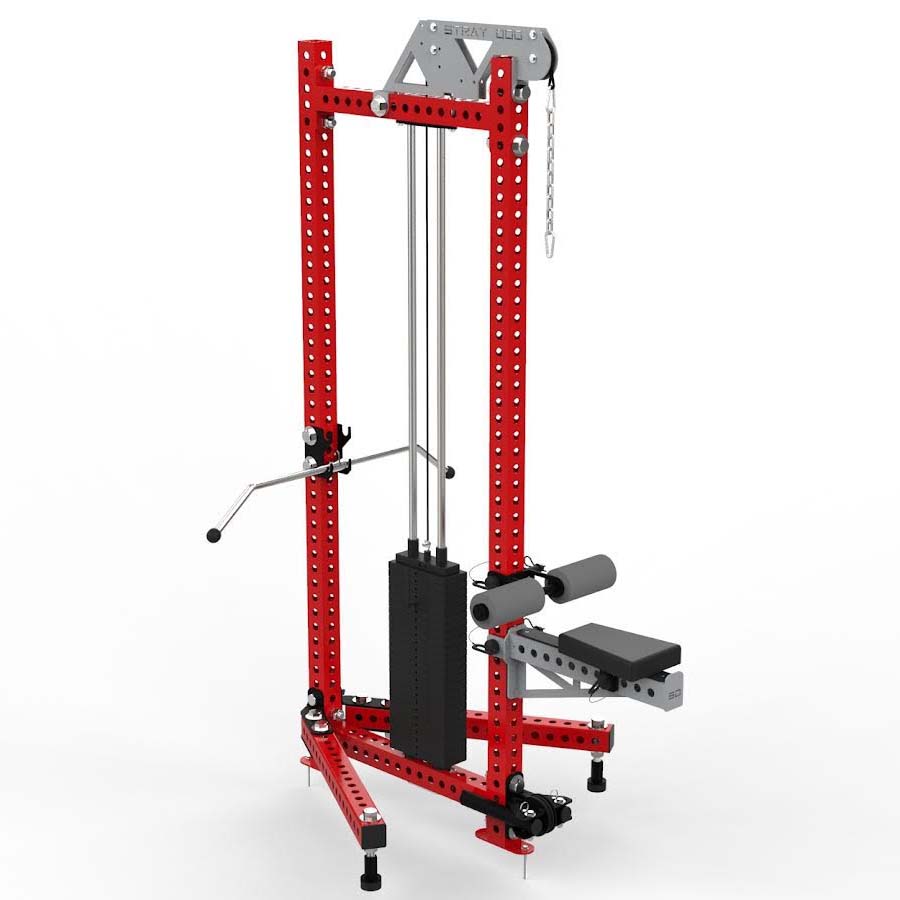
The Stand alone cable machines were designed to make our ATR cable machines be able to be stand alone or independent of any external support. If you already have an ATR unit and want to make it a stand alone unit you can purchase the ATR Stabilizer Feet which have adjustable feet to level the unit on non even surfaces.
Available in Cable Column and Lat pull down/low row Options currently on our website but a stand alone ATR Belt Squat could also be done at request as our ATR stabilizer arms can be added to the ATR Belt Squat as well.
Conclusion
At Stray Dog Strength it is our goal to create American made innovative strength training equipment that saves space and allows athletes to train more efficiently.
By having the different three Cable Machine types available in 4 different forms we have created a way to add a cable machine to virtually any weight room no matter their space limitations. If space is limited the machine attachments that go between the front and back rack posts would be the best fit for those facilities with a small footprint. For larger facilities our Rack mounted or ATR cable machines would be the best option because if the cable machine is not in the rack it can be used at the same time as the rack.
Reach out to us today and have one of our solution specialists help you design the perfect unit for your facility from Garage gyms to sports performance facilities and everything in between.

